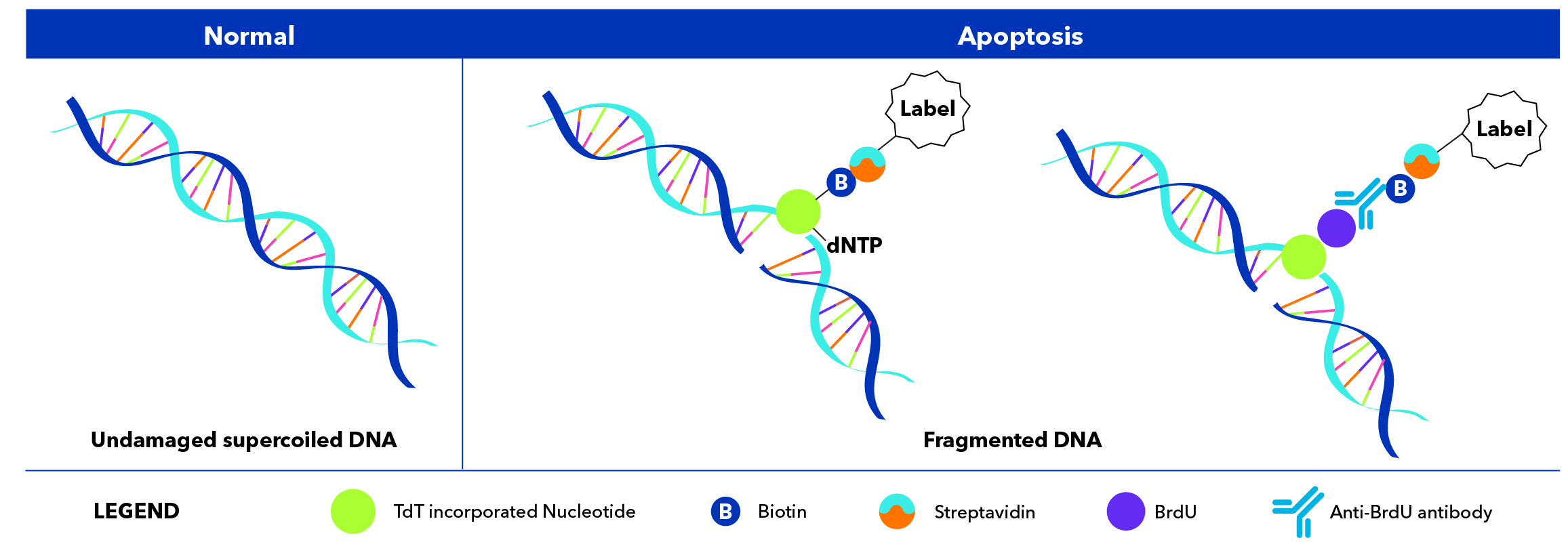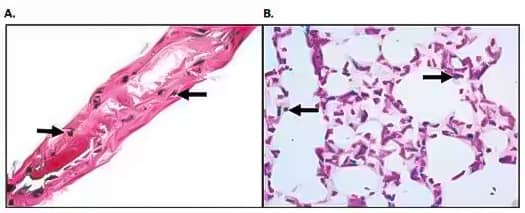DNA Fragmentation in Apoptosis
A characteristic feature of cells undergoing late stage apoptosis is DNA fragmentation. Caspase-Activated DNase (CAD, a caspase dependent endonuclease) cleaves chromosomal DNA into 180-bp nucleosomal fragments. These fragments give an appearance of DNA laddering when run on an agarose gel. Other methods for detecting DNA fragments resulting from apoptosis, particularly for intact tissues, are in situ nick translation and terminal deoxynucleotidyl transferase (TdT)-mediated dUTP nick end labeling (TUNEL).
Browse our reagents to detect DNA fragmentation including:
Principle and Variations of the TUNEL Assay

Variations of the TUNEL method involve incorporating different modified nucleotides (dNTP) into DNA naxoicks that are detected by fluorescence or a chromogenic reaction. One version uses the highly purified TdT enzyme along with a cation to incorporate biotinylated nucleotides into the 3’-OH ends of double-or single-stranded DNA with either blunt, recessed or overhanging ends. In another variation, Bromodeoxyuridine (BrdU) (Catalog #5105) is incorporated into the 3’-OH ends of DNA fragments and then probed with an anti-BrdU antibody. The incorporation of BrdU into DNA breaks is more efficient than the biotinylated equivalent and tends to offer greater sensitivity in comparison.

Examples of DNA Fragmentation. A) DNA fragmentation in FFPE section of rat small artery subjected to drug-induced apoptosis was detected by incorporation of biotinylated nucleotides (Catalog # 4826-30-K) and stained with DAB (brown). Nuclei were stained with Red Counterstain C (red). Data provided courtesy of F. D’Agostini, University of Genova Via A. Pastore, Genova, Italy.
Is TUNEL Staining Specific to Apoptosis?
TUNEL staining is not always a specific indicator of apoptosis because cells actively repairing DNA damage or undergoing necrosis can also incorporate labeled nucleotides. This problem can be alleviated by using dual labeling, such as detecting DNA breaks with a TUNEL kit and processing of caspase-3 with an appropriate antibody.